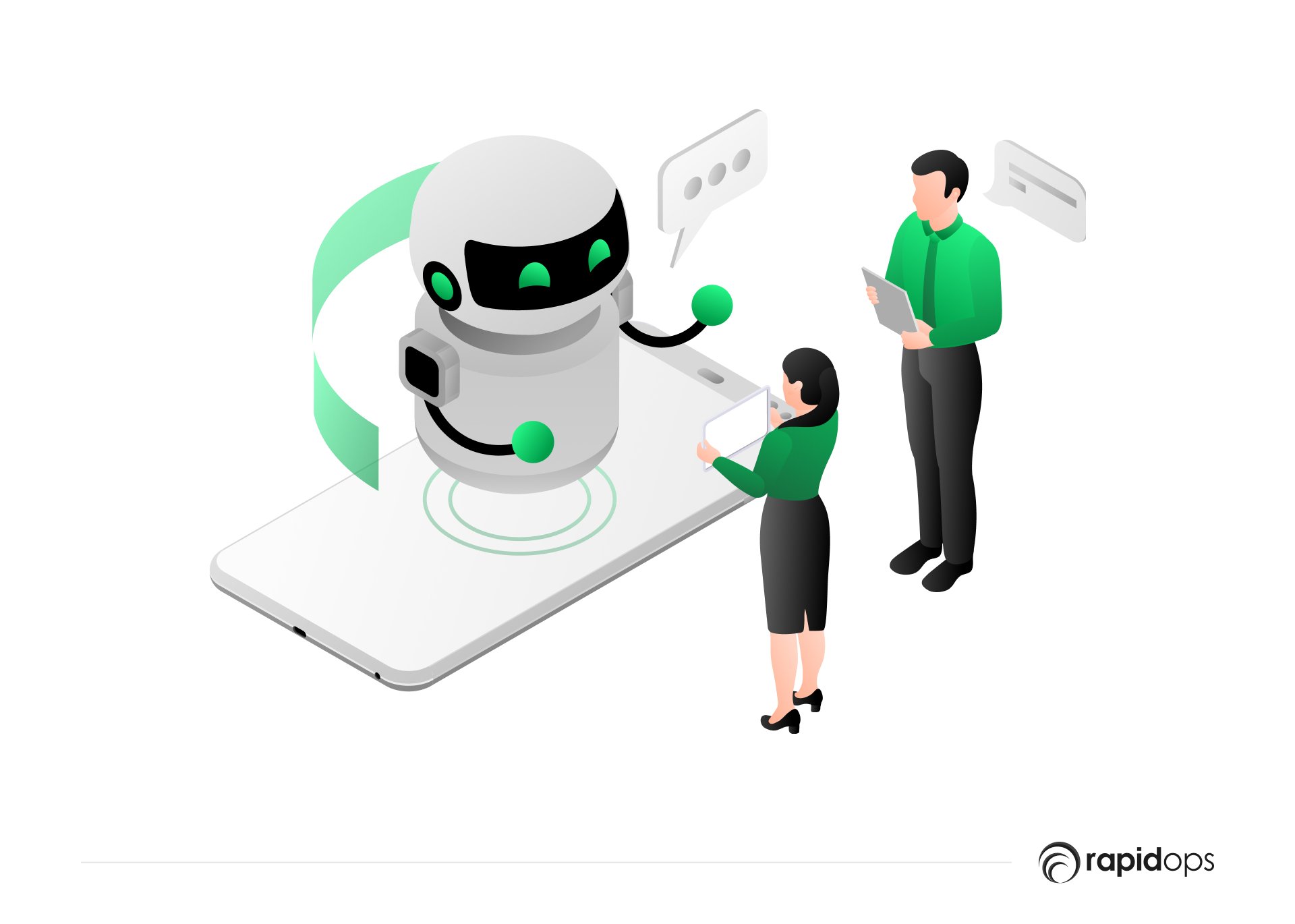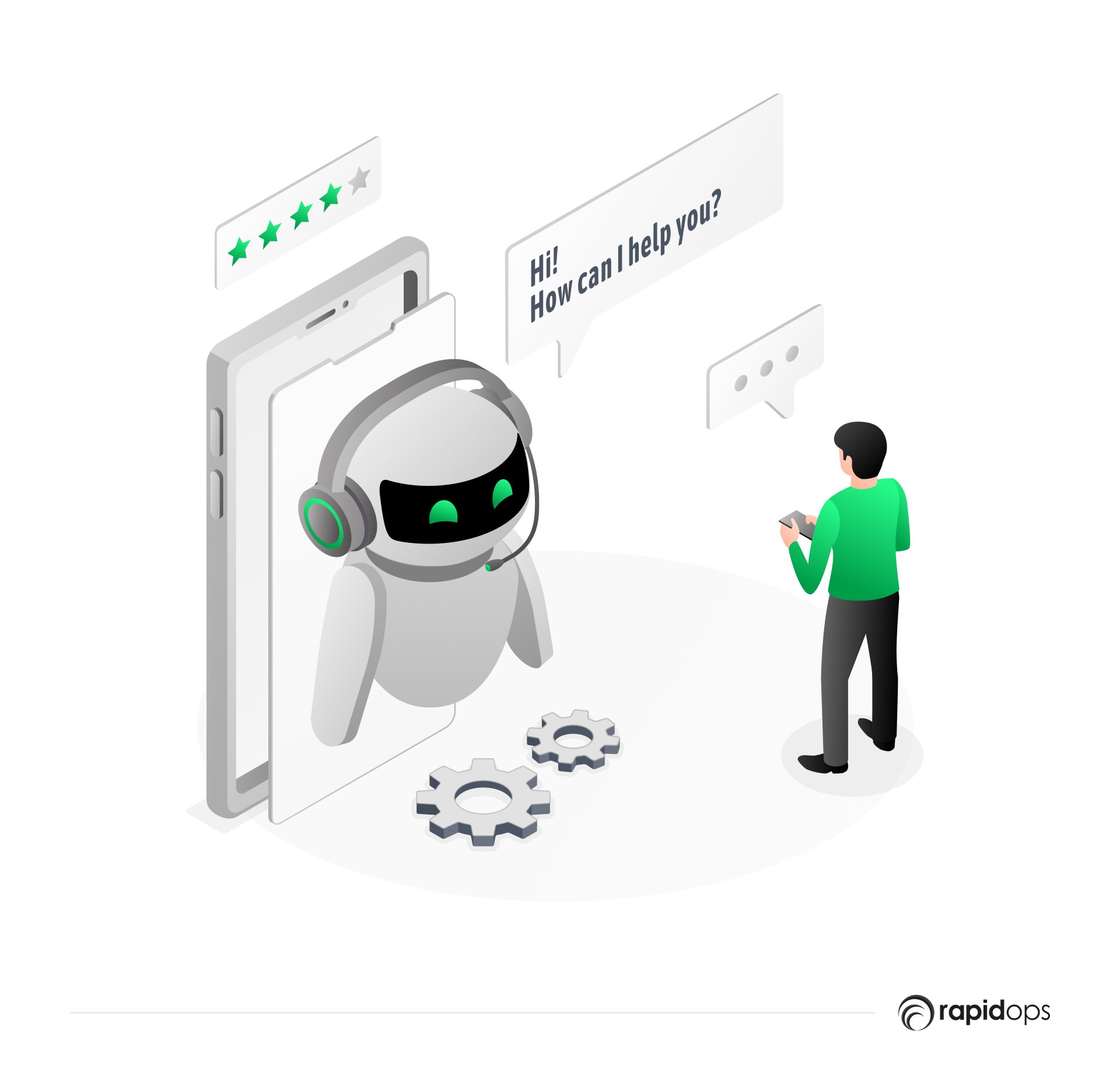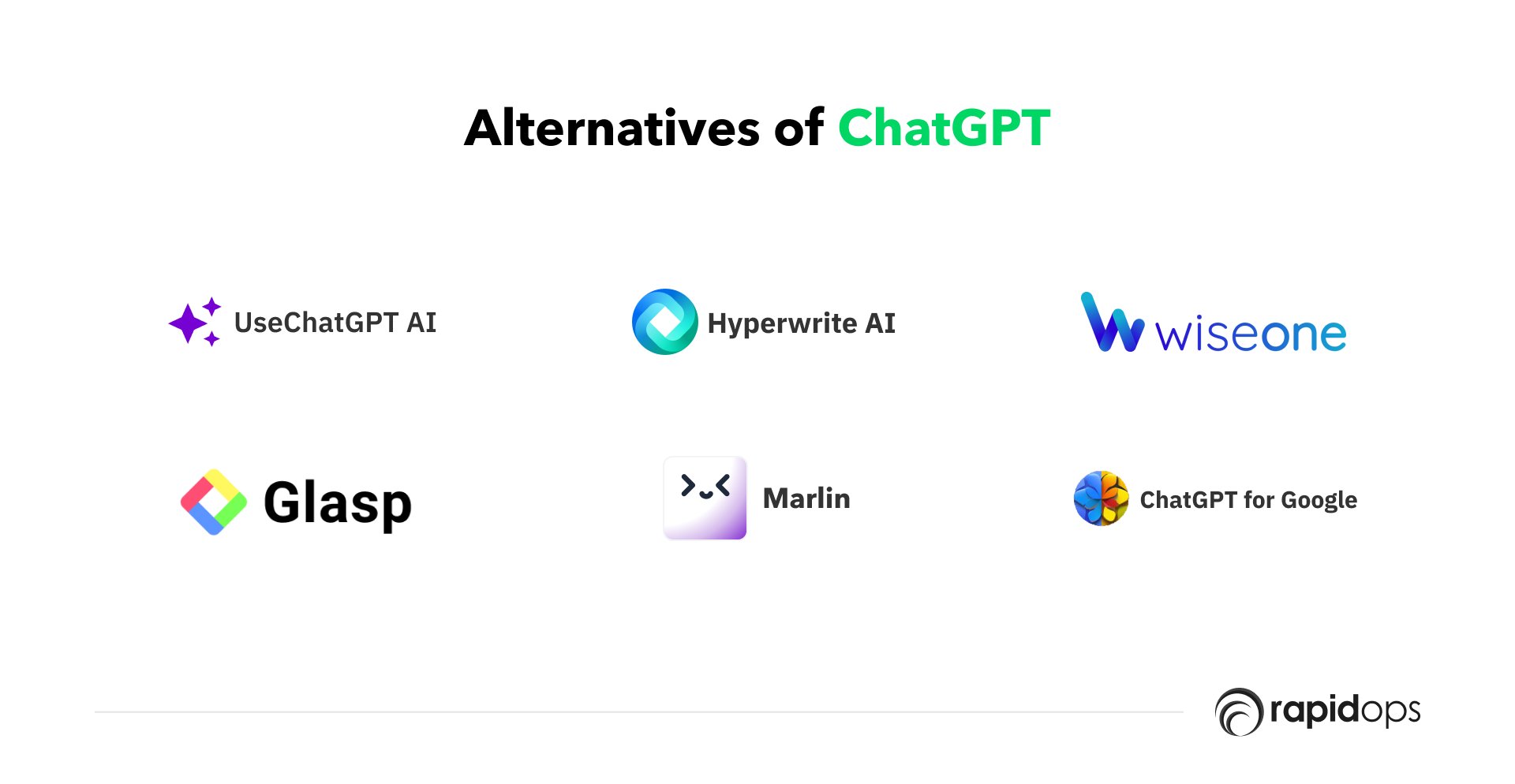In today's fast-paced and interconnected world, effective communication is crucial for the success of any business or organization.
With the rise of digital technologies, communication and collaboration have been transformed, making it easier than ever to connect with people worldwide.
One tool that has emerged as a game-changer in this new era of communication is ChatGPT.
Developed by OpenAI, ChatGPT is an advanced language model that enables organizations across industries to streamline their communication and operations.
At its core, ChatGPT is a conversational AI platform that can understand and respond to natural language inputs from users.
By leveraging the latest advances in natural language processing (NLP) and machine learning, ChatGPT can analyze and interpret the meaning of text-based inputs and generate highly relevant and context-aware responses in real-time.
ChatGPT has gained popularity with the introduction of GPT-3 and GPT-4. These models have proven to be productive and helpful for individuals, offering unique capabilities and advancements.
However, there are also some distinct differences between GPT-3 and GPT-4 in terms of how they process queries and their capabilities. So, let's explore the key differentiators between GPT-3 and GPT-4.
Want to keep up with the latest
AI advancements? Check out our up-to-date AI Tracker.
Explore NowGPT-3 vs. GPT-4

ChatGPT in various tools
ChatGPT, as a powerful language model, has been incorporated into various tools such as chatbots, virtual assistants, and more. Here are some examples of how ChatGPT is being utilized in these tools:
1. Chatbots

Chatbots are automated programs designed to simulate human conversation. Integrated with ChatGPT, chatbots can now understand natural language and provide personalized responses to user queries.
The context awareness of ChatGPT enables chatbots to offer relevant suggestions and recommendations, making the conversation more engaging and improving the user experience.
Some popular examples are:
1. Discord
Discord, a popular communication platform for communities and gamers, has integrated ChatGPT for content moderation.
The chatbot helps identify and address potentially harmful or inappropriate content shared within the platform.
2. Reddit
Reddit, a social media platform known for its communities and discussions, has also collaborated with OpenAI to experiment with ChatGPT.
The model has been used to power conversational AI features within the platform, such as the "OpenAI Bot" on specific subreddit communities.
2. Virtual assistants

Virtual assistants are AI-powered software applications that schedule appointments, set reminders, and answer user queries. With ChatGPT, virtual assistants can understand complex queries and provide personalized responses based on user preferences.
For instance, a virtual assistant integrated with ChatGPT can understand user preferences and provide personalized recommendations, such as suggesting a restaurant based on previous dining experiences.
Some well-known companies using ChatGPT for powering their virtual assistants are:
1. Microsoft
Microsoft uses ChatGPT to power its virtual assistant, Cortana.
Cortana can answer questions, provide customer support, and even control smart home devices.
2. Duolingo
Duolingo uses ChatGPT to power its virtual assistant, Duo.
The Duo can help users learn new languages by answering questions, providing feedback, and suggesting new lessons.
3. Customer service tools

Customer service tools such as help desks and support systems are increasingly incorporating ChatGPT to improve the quality of customer interactions.
With ChatGPT, these tools can now understand complex queries and provide accurate and personalized responses.
For example, a helpdesk integrated with ChatGPT can understand the context of a customer query and provide relevant solutions or recommendations.
Some prominent names utilizing ChatGPT in full swing are:
1. Salesforce
Salesforce uses ChatGPT to power its customer service chatbot.
The chatbot can answer customer questions, resolve issues, and even upsell products.
2. Air India
Air India uses ChatGPT to power its virtual assistant, AIrita. AIrita acts as a customer service rep. Like, answering customer questions, booking flights, and even providing flight updates.
Benefits of using ChatGPT
- ChatGPT improves conversational abilities by allowing the tool to understand natural language and respond in a personalized manner.
- This makes the tool more engaging and enjoyable for users.
- ChatGPT allows for better personalization, as the tool can learn from previous interactions and provide personalized recommendations based on user preferences.
- This leads to a more satisfying user experience and can result in increased user engagement and loyalty.
ChatGPT in industries
ChatGPT has the potential to revolutionize many industries by improving communication, automating routine tasks, and providing real-time insights. Here are some examples of how ChatGPT is currently being used in various industries:
1. Manufacturing
ChatGPT is used in manufacturing to improve predictive maintenance, optimize operations, and improve communication. For example, a manufacturing company can use ChatGPT to analyze sensor data from equipment and predict when maintenance is needed, thus reducing downtime and increasing efficiency. ChatGPT can also improve communication between teams, such as production and maintenance teams, by providing real-time updates and alerts.
Companies using ChatGPT for smooth operations:
- Siemens: The German engineering and manufacturing company has integrated ChatGPT into its MindSphere IoT platform to provide predictive maintenance insights to its customers.
- General Motors: The US automaker uses ChatGPT to improve communication between its production and maintenance teams, enabling them to identify and address production issues quickly.
2. Supply Chain
ChatGPT is used in the supply chain to automate routine tasks, provide real-time updates, and improve communication. For example, a logistics company can use ChatGPT to automate order processing, track shipments in real-time, and provide real-time updates to customers on the status of their shipments. ChatGPT can also improve communication between stakeholders in the supply chain, such as suppliers, manufacturers, and retailers, by providing real-time updates and alerts.
Brands using ChatGPT for seamless processes:
- DHL: The international logistics company has developed a "DHL Assistant" chatbot that uses ChatGPT to provide customers with real-time shipment tracking and delivery updates.
- Maersk: The Danish shipping company uses ChatGPT to automate its customer service operations, enabling customers to quickly receive shipping quotes, book shipments, and track them in real time.
3. Healthcare
ChatGPT is used in healthcare to improve patient communication, diagnose, and automate routine tasks. For example, a hospital can use ChatGPT to provide patients with real-time updates on their medical conditions, remind them of appointments and medication schedules, and answer their queries. ChatGPT can also assist in diagnosis by analyzing patient data and providing insights to medical professionals.
Healthcare companies using ChatGPT for better diagnosis are:
- Babylon Health: The UK-based digital healthcare company uses ChatGPT in its "GP at Hand" chatbot to provide patients with personalized medical advice and remote consultations.
- Buoy Health: The US-based healthcare technology company uses ChatGPT in its symptom checker chatbot to provide users with personalized health recommendations based on their symptoms.
4. Finance
ChatGPT is used in finance to improve customer service, automate routine tasks, and provide real-time insights. For example, a bank can use ChatGPT to provide customers with real-time updates on their account balances, answer their queries, and automate routine tasks such as bill payments. ChatGPT can also provide real-time insights to financial analysts by analyzing market data and providing insights on market trends.
Finance firms utilizing ChatGPT for their operations:
- Capital One: The US-based bank uses ChatGPT in its chatbot, "Eno," to give customers real-time account updates and assistance with their finances.
- Mastercard: The global payment technology company uses ChatGPT in its chatbot, "KAI," to provide financial institutions with insights into customer spending habits and behavior.
Future of ChatGPT
ChatGPT has already revolutionized how humans interact with machines, and its potential for future development and advancements is immense. One area of growth for ChatGPT is its ability to detect and respond to emotional cues in language, enabling it to understand better and respond to the emotions of its users.
Another development area is the integration of ChatGPT with other technologies, such as virtual and augmented reality, as well as other AI technologies like computer vision and speech recognition.
While ethical concerns exist about the potential for malicious use of the technology, researchers are developing methods to address these concerns.
Some of them are as follows:
1. Bias mitigation
One important aspect of improving ChatGPT's ethical usage is mitigating response bias. Researchers are exploring methods to reduce biases that may be present in the training data, or that may emerge during the learning process.
This includes techniques such as dataset curation, adversarial training, and fine-tuning procedures that aim to promote fairness and inclusivity in the model's outputs.
2. Explainability and transparency
Enhancing the transparency and explainability of ChatGPT's decision-making process is another critical area of research. Efforts are underway to develop techniques that allow users to understand why the model generates specific responses.
By providing explanations or highlighting the underlying reasoning behind its answers, ChatGPT can become more accountable and trustworthy.
3. User control and customization
Researchers are exploring ways to empower users with more control and customization options to address concerns regarding potential misuse.
This may involve developing user interfaces that allow individuals to set boundaries on the responses generated by ChatGPT, filter out certain types of content, or tailor the system's behavior to align with their preferences.
4. Collaborative development
Open collaboration between researchers, developers, policymakers, and the wider public is crucial for shaping the future of ChatGPT.
By soliciting feedback, engaging in public consultation processes, and involving diverse stakeholders, the development of ChatGPT can incorporate a broader range of perspectives and address potential ethical pitfalls more effectively.
Future advancements in ChatGPT

1. Developing emotional intelligence and empathy
One of the most significant developments in ChatGPT's future is the development of emotional intelligence and empathy. We often rely on non-verbal cues such as facial expressions and tone of voice to understand emotions in conversation.
ChatGPT needs to understand and respond to such cues better to provide a more natural conversational experience. This would involve integrating machine learning algorithms that enable ChatGPT to understand and generate human-like emotional responses.
2. Integration with other technologies, such as virtual and augmented reality
Integrating ChatGPT with other technologies, such as virtual and augmented reality, can provide a more immersive and interactive experience.
For example, virtual assistants powered by ChatGPT could enable users to navigate virtual environments, complete tasks, and communicate with other users through natural language.
Similarly, ChatGPT integrated with augmented reality could provide contextual information and assistance to users as they go about their daily lives.
By combining ChatGPT's natural language processing capabilities with the immersive experiences offered by virtual and augmented reality, the potential for engaging and innovative applications is immense.
3. Addressing ethical concerns such as the potential for malicious use
Addressing ethical concerns such as the potential for malicious use:
As with any new technology, ChatGPT raises ethical concerns, particularly surrounding the potential for malicious use.
For example, ChatGPT could be used for creating fake news, generating automated spam, or even impersonating humans.
As such, it is essential to address these concerns by implementing appropriate measures, such as robust data privacy policies and developing algorithms to detect and prevent malicious use of the technology.
4. Improving the accuracy and precision of responses
The accuracy and precision of ChatGPT's responses are crucial for creating a natural and engaging conversation.
As such, future developments in ChatGPT should focus on improving its response accuracy, eliminating errors in interpretation, and enhancing the naturalness of responses.
5. Enhancing the ability to understand and respond to complex or ambiguous language
ChatGPT's ability to understand and respond to complex or ambiguous language is a significant challenge, mainly when dealing with idiomatic expressions or slang.
Additionally, ChatGPT should be trained on a broader range of language patterns and expressions to enhance its ability to understand and respond to complex or ambiguous language.
6. Incorporating multi-lingual capabilities to improve global accessibility
ChatGPT's integration with multiple languages would enhance its global accessibility, enabling it to support and assist users from different regions and cultures.
As such, future developments in ChatGPT should focus on incorporating multi-lingual capabilities, allowing it to accurately translate and understand multiple languages.
By doing so, ChatGPT can provide a more inclusive and personalized experience to users from diverse backgrounds.
7. Integration with other AI technologies, such as computer vision and speech recognition
ChatGPT's integration with other AI technologies, such as computer vision and speech recognition, would provide a more comprehensive and personalized experience.
For instance, ChatGPT integrated with computer vision could analyze user behavior and provide customized recommendations based on visual cues such as clothing preferences or facial expressions.
Similarly, ChatGPT combined with speech recognition could provide real-time transcription and translation of voice conversations, enhancing accessibility and usability for individuals with hearing impairments.
Alternatives to ChatGPT
While ChatGPT is booming across industries, some tools are just as great and use OpenAI’s APIs to show results accurately as ChatGPT does.
Here are some of them:

1. Merlin AI
Merlin AI is a powerful ChatGPT extension that can be integrated into any website. This tool lets you quickly get website summaries, create Twitter replies, and generate content ideas.
Its advanced capabilities help businesses streamline their online presence by providing visitors with a more personalized user experience.
2. Hyperwrite AI
Hyperwrite AI is a browser-based personal assistant that handles tasks and can make your life easier. Whether you need to order a pizza or schedule an appointment, this tool can do the job. Hyperwrite AI helps improve productivity and efficiency by automating simple tasks, leaving you more time to focus on matters.
3. Wiseone
Wiseone is an AI-powered tool that simplifies online content. This tool lets you quickly summarize articles, answer questions, and streamline text so that you can understand it faster. With its intuitive interface, Wiseone can help you quickly navigate online content, saving you time and effort.
4. Glasp
Glasp is a unique tool that lets you get quick summaries of Youtube videos. It works by providing a transcript of the video that ChatGPT can summarize. This tool can be handy for those who want to save time and only watch the most critical parts of a video.
5. UseChatGPT AI
UseChatGPT AI is the ultimate writing assistant that helps you to write better, faster, and more efficiently. This tool allows you to rewrite emails, change your writing tone, and create instant translations directly in your browser. UseChatGPT AI can be a valuable tool for businesses that want to improve communication and written content.
6. ChatGPT for Google
ChatGPT for Google is an innovative tool that brings ChatGPT technology directly to your Google search results. In addition, this tool displays ChatGPT answers right next to the search results, providing users with more detailed and accurate information. By improving the accuracy and relevancy of search results, ChatGPT for Google can help users find what they need more quickly and easily.
Conclusion
As technology continues to advance, the potential applications of ChatGPT are vast. From improving customer service to automating routine tasks, ChatGPT can streamline communication and enhance industry efficiency.
By leveraging the power of natural language processing and machine learning, organizations can unlock new possibilities and deliver exceptional experiences to their customers. Embracing ChatGPT and its future iterations like GPT-4 can open up a world of business opportunities, revolutionizing how we communicate and collaborate.
At Rapidops, we aim to constantly explore innovative approaches to develop and implement technology, enabling businesses and organizations to achieve their mission-critical objectives.
Stay tuned for more content designed to deepen your understanding of the practical application of cutting-edge technologies like Generative AI and others in your business operations while gaining valuable insights into their potential benefits!

Niyati Madhvani
A flamboyant, hazel-eyed lady, Niyati loves learning new dynamics around marketing and sales. She specializes in building relationships with people through her conversational and writing skills. When she is not thinking about the next content campaign, you'll find her traveling and dwelling in books of any genre!

Let’s build the next big thing!
Share your ideas and vision with us to explore your digital opportunities
Similar Stories
- AI
- 4 Mins
- September 2022

- AI
- 7 Mins
- April 2023


Receive articles like this in your mailbox
Sign up to get weekly insights & inspiration in your inbox.

